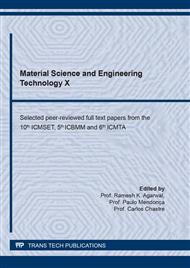p.41
p.47
p.55
p.61
p.71
p.77
p.85
p.91
p.98
First Principle Calculation and Thermodynamic Analysis of Coexisting Phase of Cu-Cr-Sn Copper Alloy
Abstract:
Based on the idea of material genetic engineering, according to the innovative design of the whole material chain and taking high-strength and high conductivity copper alloy as the research object and carrier, this paper carries out high-throughput integrated calculation and design methods such as alloy characteristic microstructure, interface chemistry, thermodynamics and kinetics, establishes the prediction model of material composition structure process performance relationship, and realizes the high-throughput preparation and characterization technology of materials, Form a low-cost and rapid development capability oriented by application objectives. In this paper, the mixed matrix and characteristic microstructure sequence are optimized by high-throughput calculation, the thermodynamic and kinetic conditions of material preparation and synthesis are analyzed, and the phase diagram and solidification technology are calculated by CALPHAD to optimize the content, morphology and distribution of characteristic microstructure in the alloy. By designing polycrystalline and peritectic platforms, the microstructure type, morphology and content of characteristic microstructure can be controlled. At the same time, the type, content and distribution of the second phase are regulated by multi-element alloy equilibrium calculation phase diagram and non-equilibrium solidification path calculation, so as to realize the integrated calculation of materials and the selection of composition and process sequence range.
Info:
Periodical:
Pages:
71-76
Citation:
Online since:
February 2022
Authors:
Price:
Сopyright:
© 2022 Trans Tech Publications Ltd. All Rights Reserved
Share:
Citation:


